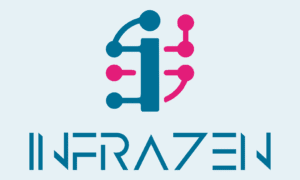Want to align your IT strategies with business goals? A technology roadmap is your answer. It’s a visual plan that helps businesses prioritize tech upgrades, cut costs, boost productivity, and improve security. Here’s what you’ll learn in this guide:
- Key Benefits: Save 30-50% on software costs, recover from disasters 60% faster, and enhance efficiency by 25%.
- Core Components: Inventory systems, map goals, set timelines, ensure security, and compare costs.
- Step-by-Step Process: Audit current tech, set goals, build team support, and implement upgrades.
- Cost Planning Tips: Allocate 70% to operations, 20% to growth, and 10% to new tech.
- Future-Proofing: Regular updates, security layers, and trend monitoring keep your roadmap relevant.
Use this roadmap to achieve faster ROI, better security, and streamlined operations. Let’s dive into the details!
Getting Started
Current Tech Review
Starting with a detailed technology review is crucial for building a solid roadmap. Did you know that 72% of SMBs uncover major cybersecurity issues during their initial assessments? [2]. To keep everything aligned, match this review with the System Inventory component of your roadmap (see Core Elements).
Use these three metrics to document your current tech setup:
| Assessment Area | Key Metrics | Target Benchmark |
|---|---|---|
| System Performance | Uptime percentage | ≥99.5% |
| Response Time | Critical issue resolution | <4 hours |
| User Experience | Staff satisfaction score | >80% |
Here’s an example: One manufacturer discovered they were losing 30% in productivity due to outdated inventory software during their evaluation [7][6].
Setting Tech Goals
Turn your business goals into actionable tech initiatives. Here’s how you can connect the two:
| Business Goal | Technology Initiative | Success Metric |
|---|---|---|
| Customer Retention | AI Chatbot Implementation | 40% fewer support tickets |
| Market Expansion | Cloud Infrastructure Migration | 99.9% uptime achievement |
| Operational Efficiency | ERP System Modernization | 25% faster processing |
To prioritize effectively, try the RICE model (Reach, Impact, Confidence, Effort) [3][7]. Start with high-impact projects that require less effort to gain early wins and build momentum.
Building Team Support
Getting buy-in from non-technical stakeholders is easier when you connect tech upgrades to measurable business outcomes. For example, studies show that linking upgrades to revenue growth can boost approval rates by 60% [7][6].
For teams unfamiliar with IT, use simple assessment templates that focus on their specific needs rather than technical jargon [6]. This makes it easier to identify pain points while keeping everyone engaged.
Watch out for these common mistakes:
- Ignoring shadow IT systems
- Overlooking compliance requirements
- Underestimating risks tied to vendor lock-in with proprietary solutions [7]
Finally, store all findings in a cloud-based collaboration tool. This ensures everyone has access to a single, reliable source of information [6].
Once your team is on board, you can move on to structuring your implementation timeline and allocating resources efficiently.
Creating Your Roadmap
Step-by-Step Timeline
Having a structured roadmap can improve tech adoption rates by 35% compared to unplanned methods [3]. Break your implementation process into four main phases:
| Phase | Duration | Key Activities | Deliverables |
|---|---|---|---|
| Assessment | 2-4 weeks | Infrastructure audit, gap analysis | Current state report |
| Strategic Alignment | 1-2 weeks | Business goal mapping | Priority matrix |
| Implementation | 3-6 weeks | Solution deployment | Milestone tracking |
| Review | Ongoing | Bi-monthly progress checks | Performance metrics |
To maintain focus and efficiency, set up a governance structure with clear roles and responsibilities. This ensures oversight and timely decision-making throughout each phase.
In-House vs MSP Options
Choosing between managing internally or partnering with a Managed Service Provider (MSP) depends on your organization’s resources and needs. For companies with fewer than 10 employees, MSPs often provide better value with access to top-tier security and 24/7 monitoring [5].
Here’s a quick comparison:
| Criteria | In-House Management | MSP Partnership |
|---|---|---|
| Initial Investment | High capital expenses | Predictable monthly fees |
| Technical Expertise | Limited to in-house knowledge | Access to specialized teams |
| Scalability | Hardware limitations | Flexible cloud-based solutions |
| Security | Self-managed systems | Advanced protection, including 24/7 threat monitoring (e.g., InfraZen) |
| Compliance | Managed internally | Assistance with compliance standards |
Once you’ve settled on a delivery model, align your budget accordingly using the 70/20/10 framework.
Cost Planning
Use the following allocation strategy to guide your budget:
- 70% for day-to-day operational needs
- 20% for short-term growth initiatives
- 10% for exploring new technologies
Be mindful of hidden costs. For example, a manufacturing company budgeted $50,000 for ERP software but overlooked $12,000 in required training expenses [5][4].
Make sure your budget includes:
- Software licensing, implementation, and training (typically 20-30% of software costs)
- Data migration expenses
- Cybersecurity insurance
- A contingency fund (around 15% of the total budget)
Track your ROI by measuring improvements such as increased uptime and reduced support ticket costs.
Future-Proofing Your Plan
Security Planning
A strong security strategy involves multiple layers working together:
| Security Layer | Key Components |
|---|---|
| Endpoint Protection | EDR systems, device encryption |
| Data Security | Encrypted storage, access controls |
| Network Defense | Real-time monitoring, firewall management |
| Incident Response | Automated playbooks, crisis teams |
After the 2024 MOVEit breach, companies with automated response systems managed to deploy critical updates within 72 hours [2].
These layers tie directly into the Security Protocols outlined in your roadmap’s Core Elements.
Growth and Tech Trends
Balancing resources between current needs and emerging technologies is crucial. When planning for scalability, keep an eye on these metrics:
| Metric | Monitoring Frequency |
|---|---|
| User Capacity | Monthly |
| Data Throughput | Weekly |
| System Uptime | Continuous |
| System Connectivity Rate | Daily |
MSP Partnership Benefits
If your business requires specialized expertise, partnering with a managed service provider (MSP) can significantly strengthen your roadmap execution. Here’s how MSPs can make a difference:
| Benefit Area | Impact |
|---|---|
| Tech Gap Analysis | Ongoing evaluations |
| Cost Management | 25% reduction in replacement costs |
| System Optimization | 4-hour mean recovery time |
| Security Updates | 4-hour mean recovery time |
To maximize these benefits, schedule quarterly reviews with your MSP. This ensures your roadmap stays aligned with the latest technologies. Additionally, conducting technical debt audits every six months can help avoid outdated systems. For small businesses, proactive management has been shown to save an average of $18,000 annually [2]. This approach lays the groundwork for effective maintenance, which will be discussed in the next section.
sbb-itb-70a39e2
Keeping Your Plan Current
Regular Plan Updates
Keeping your roadmap aligned with evolving needs is crucial. Schedule quarterly reviews and monitor monthly KPIs to ensure targets like 99.9% uptime and over 85% user adoption are met [2][5].
| Review Type | Frequency | Key Focus Areas |
|---|---|---|
| Deep-dive Assessment | Bi-annual | Infrastructure health, security, compliance |
| KPI Dashboard Review | Monthly | System uptime, user adoption, security incidents |
| Tech Town Halls | Quarterly | Team feedback, priority setting |
Tech Replacement Cycles
Plan your system updates around your roadmap’s lifecycle tracking. A structured, four-phase approach simplifies transitions and minimizes disruptions:
| Phase | Key Activities |
|---|---|
| Performance Benchmarking | Set benchmarks and identify gaps |
| Parallel Testing | Validate systems and gather user feedback |
| Data Migration | Conduct staged transfers and verify data |
| Legacy System Retirement | Gradually phase out old systems |
Making Improvements
Improving your roadmap means smartly allocating resources across various initiatives. For instance, a Durham manufacturer enhanced workflow integration by collecting monthly usability scores through shop floor tablets [6].
“Our trend categorization helps clients maintain stability while adopting innovations”, said InfraZen’s technical director during the Northeast Tech Trend briefing [6].
Summary
A well-executed technology roadmap can boost annual ROI by 7.4% through clear priorities, phased execution, and regular reviews [1]. This structured method also reinforces the cost-saving and productivity gains achieved in earlier stages.
How resources are allocated is key. Experts suggest dedicating 60% to core infrastructure and 40% to innovation [3]. This approach maintains operational stability while enabling growth through new opportunities.
Security is another critical element. Integrating security measures from the start reduces breaches by 68%, which is especially important for businesses adopting cloud solutions or AI [2][5].
Key metrics show how roadmaps drive results:
| Metric | Target | Business Impact |
|---|---|---|
| System Uptime | ≥99.9% | Keeps operations running smoothly |
| Incident Response | 50% reduction | Reduces downtime and disruptions |
| User Adoption | >85% | Increases the value of investments |
For small businesses, partnering with MSPs can speed up implementation by 40% while ensuring robust security [5][6].
To keep a roadmap relevant, quarterly audits should compare emerging tech trends with core business goals [2][3]. This ongoing evaluation ensures investments meet real needs instead of chasing fleeting trends.
FAQs
Here are answers to some common questions about maintaining effective technology roadmaps:
How do you create a technology roadmap?
Building a technology roadmap involves aligning tech initiatives with business objectives. Follow these steps:
- Link tech initiatives to business goals using SMART criteria [2].
- Audit current systems to identify gaps or opportunities.
- Engage key departments through interviews to understand their challenges and needs.
- Score initiatives using the RICE model for prioritization [5].
- Plan budgets and assign ownership to ensure accountability.
- Track progress by measuring outcomes against baseline KPIs.
What should an IT roadmap include?
An IT roadmap should cover essential elements to ensure smooth execution and measurable success.
| Component | Key Details | Example |
|---|---|---|
| Timeline Visualization | Sequence of projects and dependencies | Quarterly milestones |
| Resource Requirements | Budget and staffing needs | Training allocations |
| Risk Management | Plans to address potential issues | Backup protocols |
| Success Metrics | Indicators to measure progress | Adoption rates |
What is the IT roadmap timeline?
Roadmap timelines are typically divided into three planning horizons, aligned with quarterly reviews:
- Short-term (0-6 months): Focus on critical updates.
- Mid-term (6-18 months): Plan for system upgrades.
- Long-term (18+ months): Explore and implement emerging technologies.
For businesses using Managed Service Providers (MSPs) like InfraZen, horizon planning can speed up implementation by as much as 40% [5][6].

